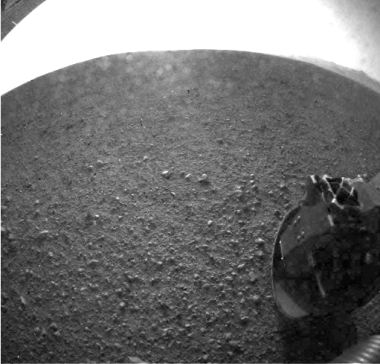A nuclear-powered rover has landed safely and beamed back its first images from Mars, where it will attempt to answer questions about whether life has ever existed, or ever could exist, on the red planet.
 |
| An image of the Martian surface beamed back by Curiosity (Image: NASA) |
The most advanced Mars rover yet developed by NASA, Curiosity, landed safely in the Gale Crater after a 36-week flight and the successful completion of the most complex landing ever attempted on the planet. The rover's scientific equipment includes a laser-firing instrument for checking the elemental composition of rocks from a distance. It will use a drill and scoop at the end of its robotic arm to gather soil and powdered samples of rock interiors, then sieve and parcel out these samples into analytical laboratory instruments inside the rover.
Curiosity is about twice as long and five times as heavy as NASA's two previous Mars rovers, Spirit and Opportunity, and its plutonium-powered nuclear battery will provide the mobile laboratory with about 2.7 kWh per day, far in excess of the 1 kWh per day maximum of the earlier solar-powered rovers. The nuclear battery is also much longer-lasting than the solar power systems used by the previous missions, and is expected to last through the rover's planned operations and beyond, providing the potential for the mission to be extended.
The rover is currently expected to spend two years investigating whether the region ever hosted conditions which could have been favourable for microbial life. Observations from orbit have already identified clay and sulphate minerals in the area, suggesting a wet history.
NASA administrator Charles Bolden described the landing as an amazing achievement and a significant step towards the goal of sending humans to Mars in the mid-2030s. "Today, the wheels of Curiosity have begun to blaze the trail for human footprints on Mars," he said.
The United Nations Office for Outer Space Affairs (UNOOSA) recognises that nuclear power sources are "particularly suited or even essential" for some outer space missions thanks to attributes including their compactness and long life. It has adopted a set of principles applicable to "nuclear power sources in outer space devoted to the generation of electric power on board space objects for non-propulsive purposes", including a set of guidelines and criteria for their safe use in missions where non-nuclear power sources are not a reasonable option.
Researched and written
by World Nuclear News






_18570.jpg)
_16159.jpg)
_49205.jpg)





